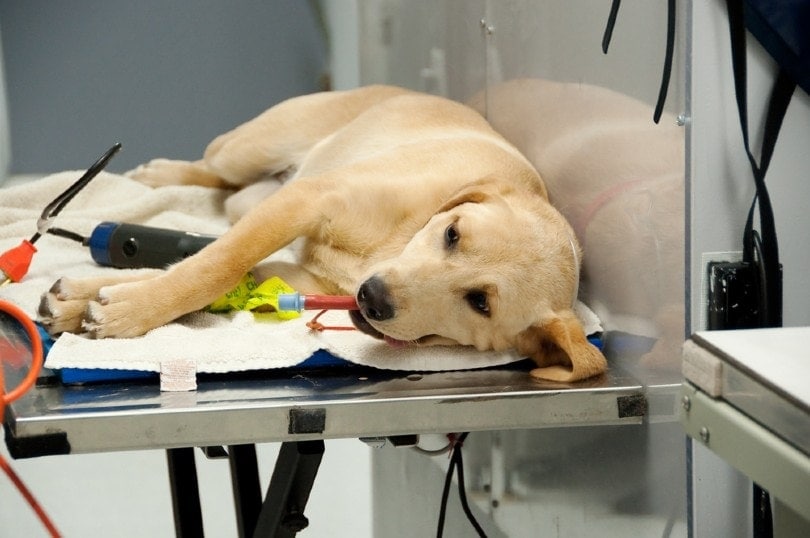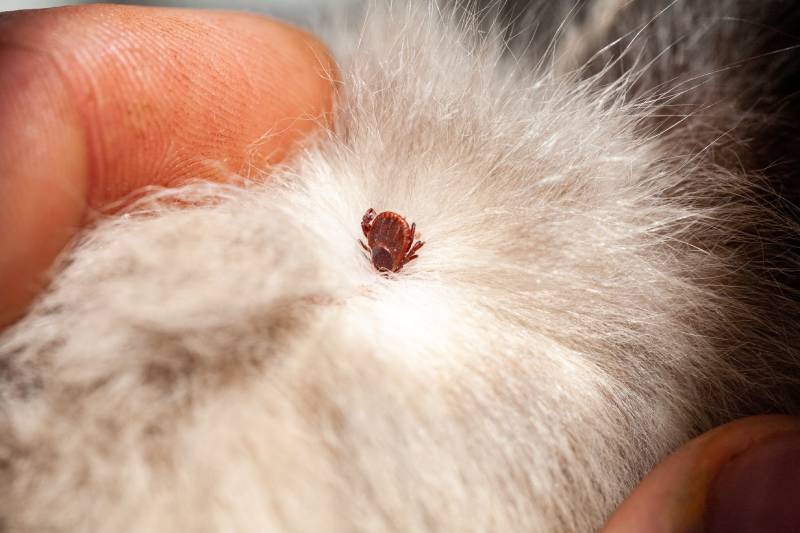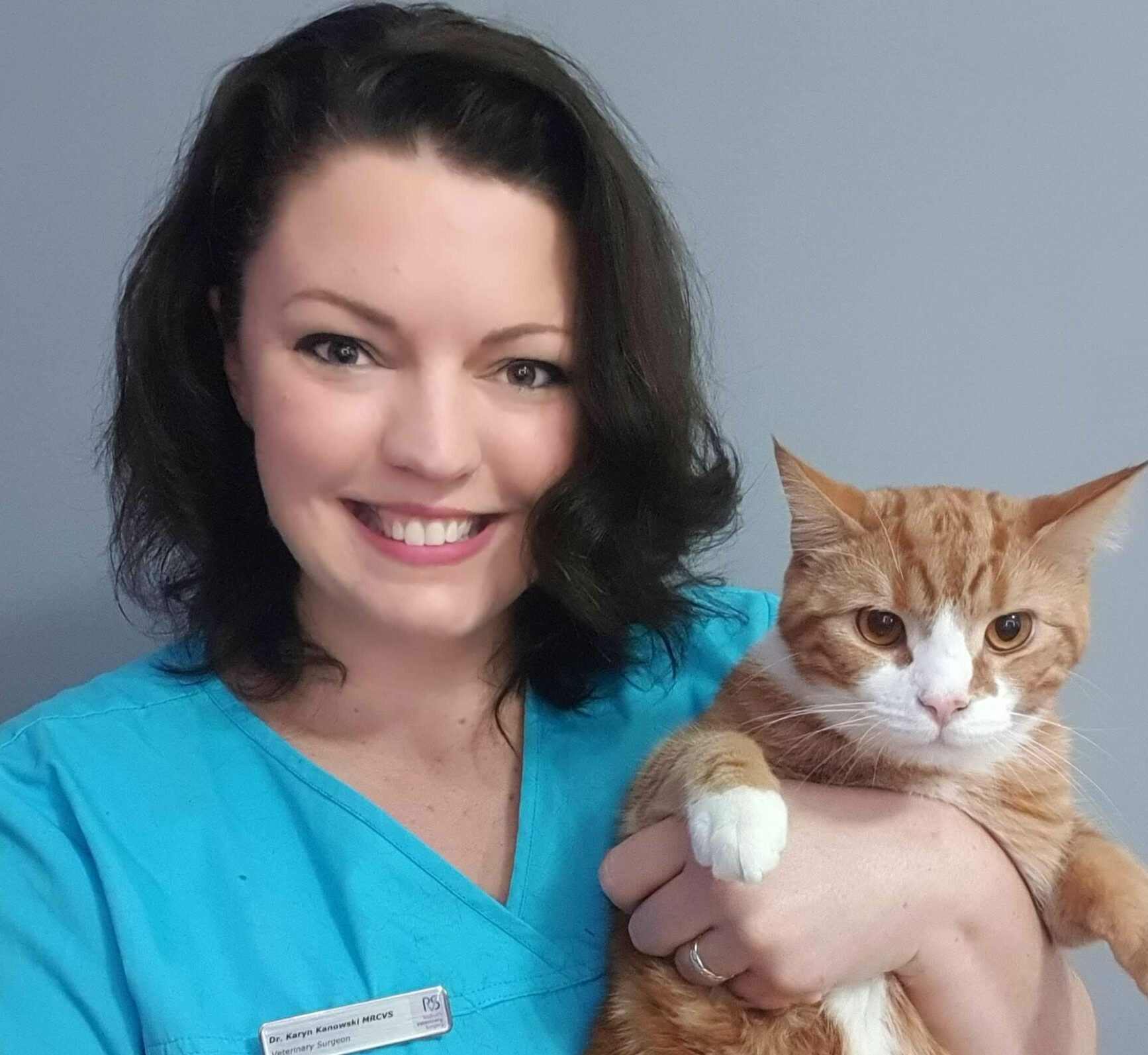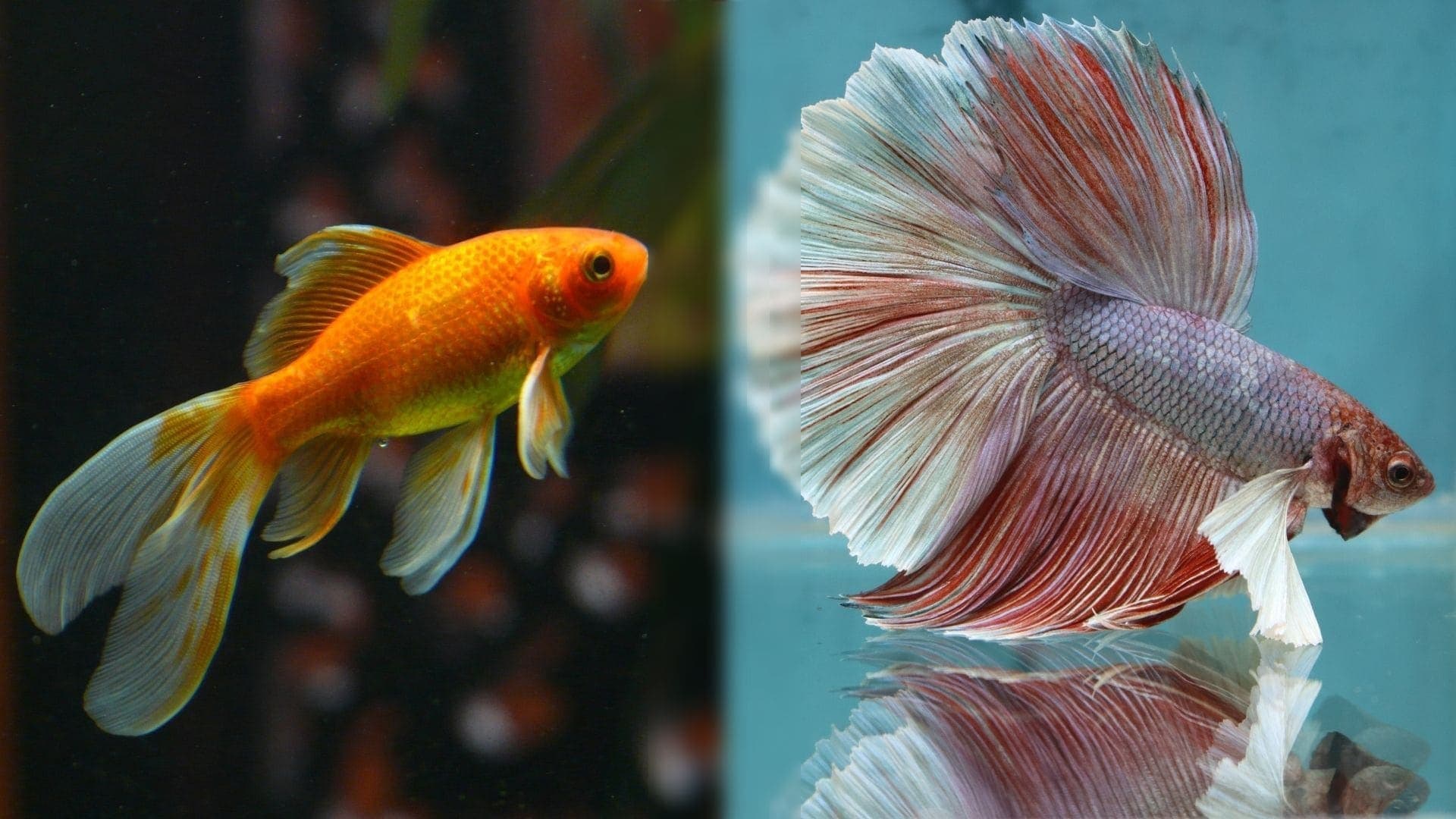My Dog Ate a Tampon! Here’s What to Do (Vet Answer)
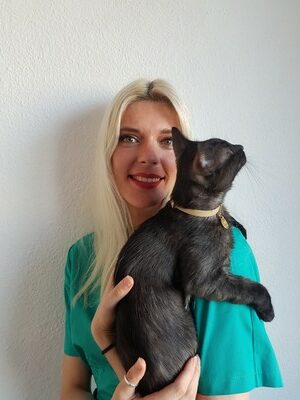
Updated on
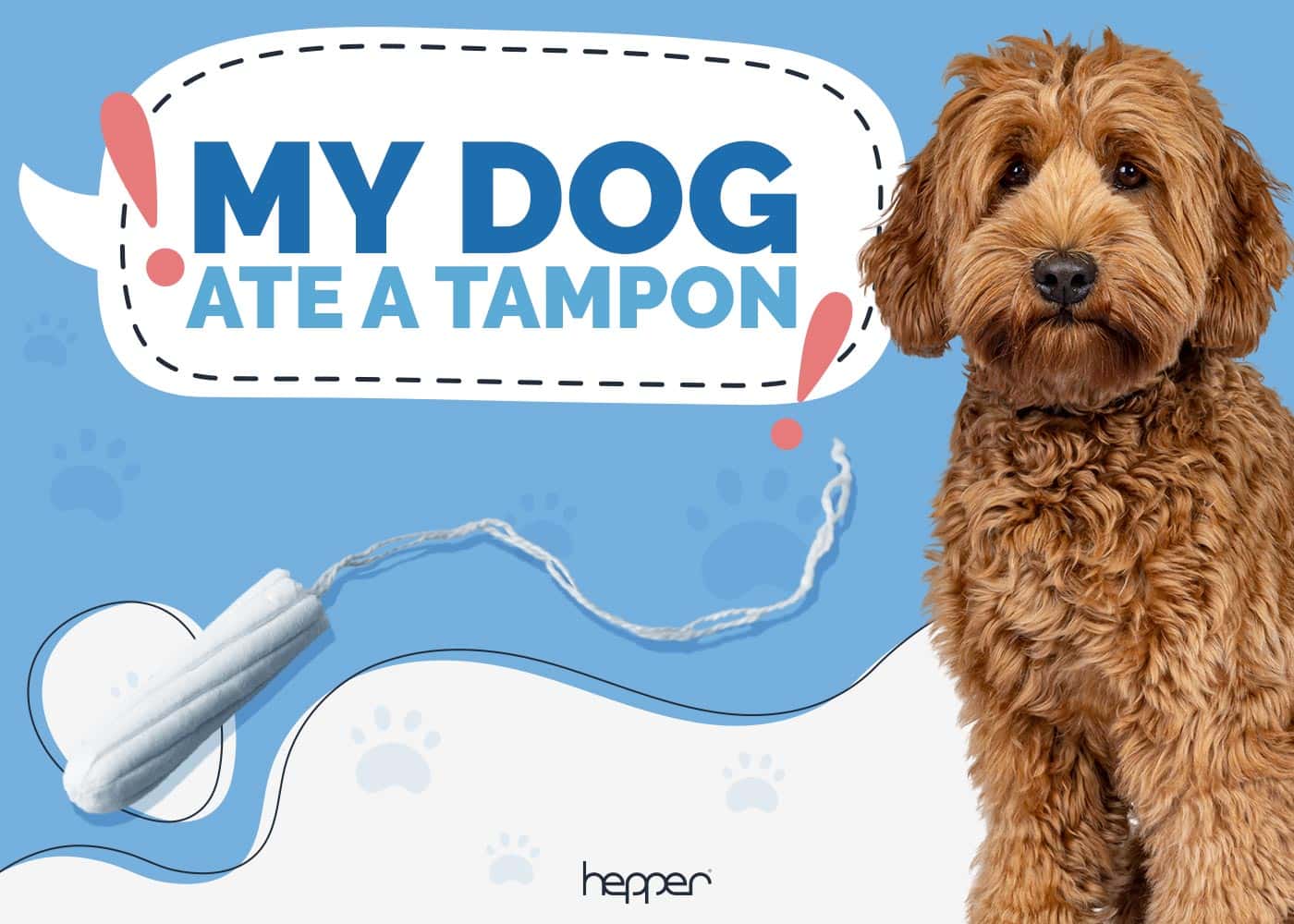
If your dog has eaten an unused or used tampon, go to the ER immediately. If you cannot get to the veterinary clinic for various reasons, monitor your dog for any signs of discomfort, whether it is a change in behavior or something else that makes you think that something is wrong with your dog. (e.g., lethargy, lack of appetite or defecation, etc.).
Read on to learn what can happen if your dog eats a tampon, the clinical signs that might appear, and what you can do to help your pet.
Is My Dog in Danger If They Ate a Tampon?
Any foreign object that your dog eats, including a tampon, can put your pet’s life in danger. So, yes, your dog can be at risk if they eat a tampon.
Tampons are designed to retain liquids and moisture. As a result, unused tampons are even more dangerous because they will swell in your dog’s throat or stomach, making them difficult to remove or pass.
- The object could get lodged in your dog’s throat, which could lead to choking/suffocation.
- The tampon can cause intestinal blockage and severe complications.
For these reasons, it is recommended to call the vet and act immediately. Here is what you can do.
What to Do If Your Dog Is Choking on a Tampon
If an object blocks your dog’s airways, it can kill them. Therefore, if you see your dog choking, open their mouth gently (make sure you don’t get bitten), and try to see the tampon. Don’t insert your hand without seeing the object because you risk pushing the tampon even farther into your dog’s throat and making them suffocate. Extract the tampon if you see it.
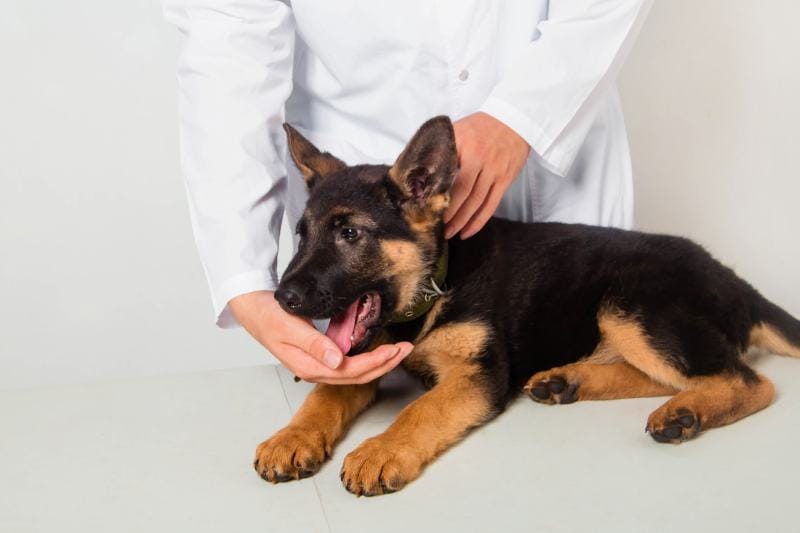
Signs That Your Dog Is Choking
Clinical signs that your pet is choking will be obvious and may include:
- Distress
- Panic
- Suffering
- Pawing at the mouth
- Rubbing their face on the ground
- Hypersalivation
- Coughing, gagging, and/or retching
- Blue gums (cyanosis)
Act immediately if you notice these clinical signs.
If you don’t see the tampon in your dog’s throat, try the Heimlich maneuver or call the vet immediately.
- Hold your dog in your lap.
- Turn them over (belly up).
- Find the gap under the ribcage (in the stomach area).
- Make a fist and place it in that gap.
- Push firmly inward and upward four to five times in the direction of your dog’s head. Use a thrusting motion.
- Check your dog’s mouth to see if the tampon has been dislodged.
- Remove the tampon if you see it.
If you have a medium or a large dog, you can apply the Heimlich maneuver when they are lying on the side or when they are standing.
- Kneel behind your dog.
- Put a hand on your dog’s back.
- Find the gap under the ribcage (in the stomach area).
- Push inward and upward four to five times in the direction of your dog’s head. Use a thrusting motion.
- Check your dog’s mouth to see if the tampon has been dislodged.
- Remove the tampon if you see it.
- Stand over your dog.
- Put your arms around them as in a hug (your hands must join at the gap under the ribcage).
- Make a fist with your hands.
- Push inward and upward four to five times in the direction of your dog’s head. Use a thrusting motion.
- Check your dog’s mouth to see if the tampon has been dislodged.
- Remove the tampon if you see it.
If none of these methods work, contact the veterinarian immediately.
What to Do If Your Dog Swallowed a Tampon
If your dog swallowed a tampon with the plastic applicator on and it passed from the stomach into the intestine, it can cause bloody diarrhea and pain if it scratches the intestinal lining. If the tampon gets stuck in the intestine, it can lead to serious complications and even the death of your pet.
Do not induce vomiting unless your vet has recommended it. If you cannot go to the vet for various reasons, you can wait for a couple of days and see if your dog vomits or passes the tampon in their stool or if clinical signs occur.
Signs That Your Dog Has an Intestinal Obstruction
If the tampon has caused an intestinal obstruction (total or partial), the following clinical signs may occur:
- Frequent vomiting
- Constipation (if there is a total blockage)
- Diarrhea (if there is a partial blockage)
- Dehydration
- Loss of appetite
- Abdominal discomfort and pain
- Distended (swollen) abdomen
- Weakness
- Lethargy
- Malnutrition
- Depression
If these clinical signs occur, you must take your dog to the vet as soon as possible. The intestinal blockage will not go away on its own, and severe complications will occur (e.g., intestinal perforation, peritonitis, sepsis), which can put your dog’s life in danger.
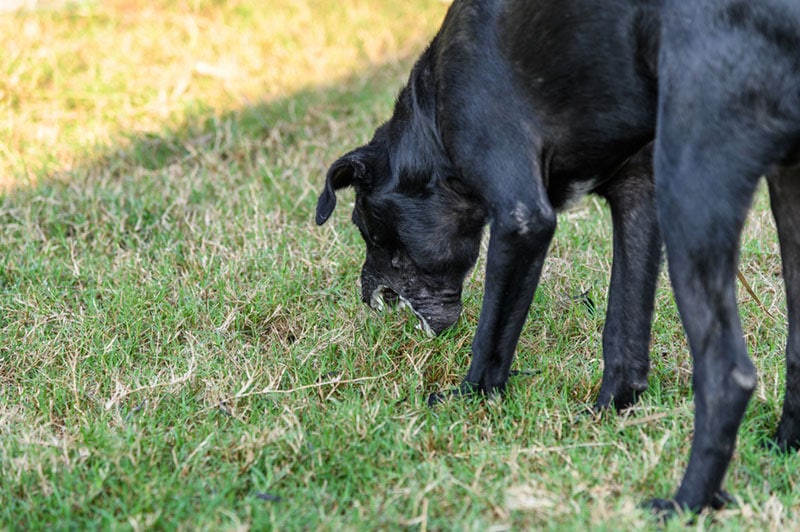
Conclusion
Eating a tampon can be dangerous for your dog. It can get stuck in their throat and lead to suffocation or can end up in the stomach or intestine, where it can damage the mucosa or cause an obstruction. All these cases are severe and can lead to the death of your dog. For this reason, it is vital to act immediately.
If the tampon has led to suffocation, try to remove it by hand or apply the Heimlich maneuver. If you fail, take your dog to the closest ER clinic. If the tampon has been swallowed, do not induce vomiting at home, and contact the veterinarian. They can recommend taking your dog to the clinic or waiting a few days to see if your pet vomits the tampon, passes it in their feces, or if clinical signs occur.
See also:
Featured Image Credit: Lashchuk, Shutterstock



